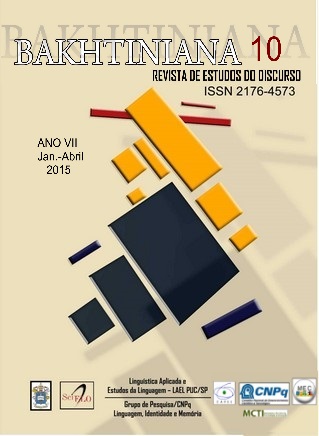Temporal-Spatial Unity Experience in Literature and Psychology
Keywords:
Psychological Processes, Chronotope, NarrativityAbstract
In this essay we defend the argument that chronotopic configuration enhances literary works providing metaphors for everyday life. This argument is embedded in statements in which Bakhtin emphasized that the organization of the characters’ psychological processes in plots is related to the experience of temporal-spatial unity, conceptually called the chronotope. In order to address these issues, we developed an analysis of chronotopic configuration of author-character, in “The Book of Disquiet” by Fernando Pessoa. The difficulty met by the author-character in negotiating positions of figure and background in plots reflects a specific border experience, revealed in the common association of antagonistic terms and frequent use of neologisms. Considering properties of narrativity in the chronotopic analysis we can discuss the potential literature has of providing real life metaphors. Moreover, through these remarks, greater emphasis has been placed on the reader’s participation in the constitution of the chronotope and on literary work.


